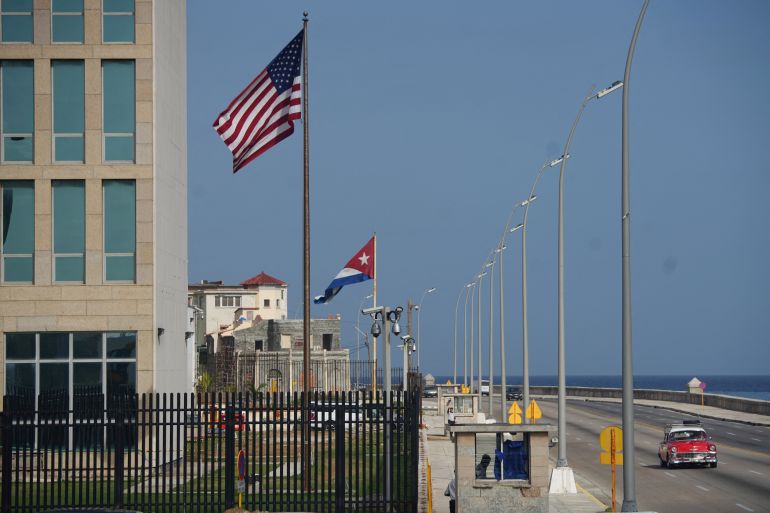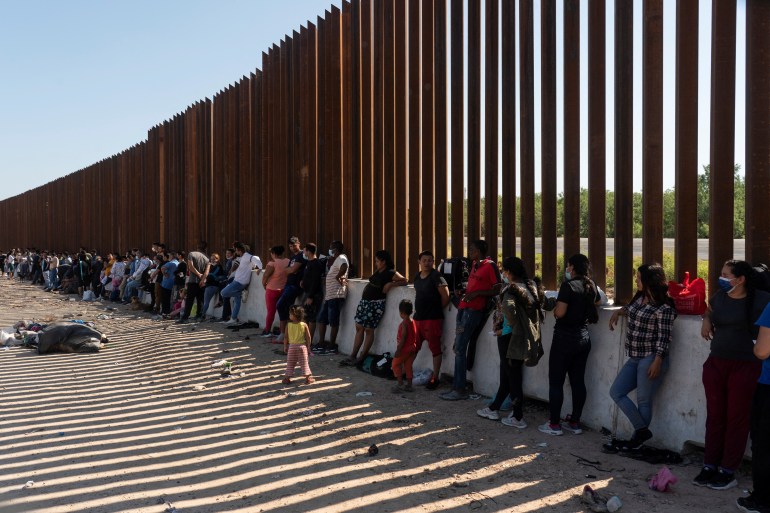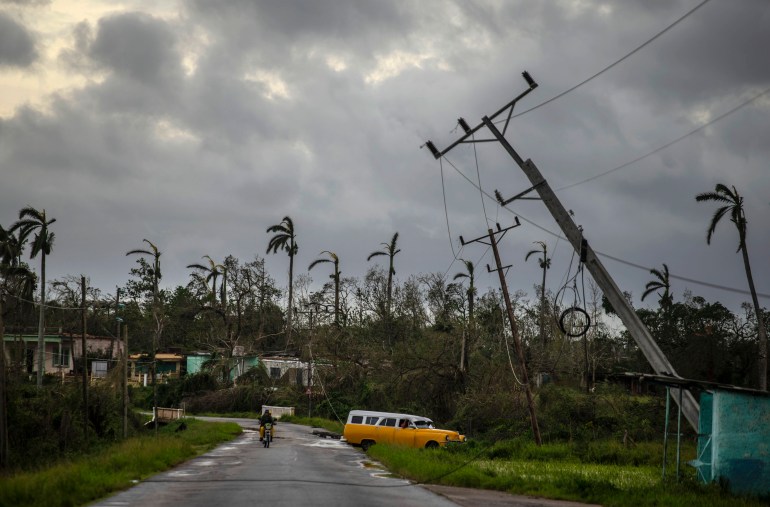Cuba’s new parliament will face a familiar economic hangover
Slammed by sanctions, the pandemic, and high inflation, Havana is making piecemeal reforms which may not be enough.

For Jose Guerra Ferrer, a Havana-based industrial engineer, “the economic situation in Cuba is bad”. “I hope it can be addressed by the new parliament,” he says, with reference to national assembly elections this weekend.
In recent years, Cuba’s parliament has implemented gradual policy adjustments to try and ease economic constraints and that is Guerra Ferrer’s hope with the country’s upcoming elections.
Keep reading
list of 4 itemsUganda’s new anti-homosexuality law bans identification as LGBTQ
TikTok CEO to tell legislators app ‘never shared’ data with China
Sri Lanka receives first tranche of IMF bailout, says president
The country’s highest political body is assembled through committees such as trade unions and student organisations. Once candidates, most of whom are members of the Communist Party of Cuba, or PCC, are nominated, they can confirm their choice for president.
That is certain to be the incumbent, Manuel Diaz-Canel, who took over from Raul Castro in 2018. The following year, in 2019, Diaz-Canel, a PCC stalwart, adopted a new constitution. Amid growing political dissatisfaction, it was designed to modernise Cuba’s entrenched state apparatus.
Voter absenteeism has become a feature of recent elections in Cuba. Turnout for the November 2022 municipal elections, for instance, fell below 70 percent for the first time, indicating disengagement in a political system that depends on public support.
Decades of sanctions

After US-backed leader Fugencio Batista was toppled in 1959, Cuba became a one-party-state led by Fidel Castro and his successors. Since then, the PCC has defied expectations by surviving decades of economic isolation and the disintegration of the Soviet Union, a key ally.
Since the early 1960s, the cornerstone of US foreign policy towards Cuba has been a controversial trade embargo, among other restrictions. Then, in 2015, the Obama administration began normalising relations with Cuba, including a shift away from sanctions.
By contrast, Donald Trump reintroduced old measures and added new ones as well. He barred US tourism and limited the amount of money Cuban Americans could send to their relatives (some remittance restrictions have been eased under President Joe Biden).
“The truth about sanctions is that repercussions are multilayered,” says Guillaume Long, Ecuador’s former minister of foreign affairs. “Governments are prevented from following standard protocols, which undermines state-building capacity.”
He stressed that “there is no doubt that Cuba’s economy has suffered under US sanctions”. The country also experienced a painful adjustment after the collapse of the Soviet Union in 1991. Up to that point, the USSR supplied 90 percent of Cuba’s petroleum needs and 70 percent of all other imports, including food and medicine, mostly at subsidised prices.
Between 1989 and 1994, Cuban trade with the former Soviet Union plummeted by 89 percent. While domestic production was squeezed, the government consolidated its control over the economy. Large public enterprises have survived through privileged access to credit and foreign currency.
Today, Cuba’s economy remains undiversified and commodity-dependent. Tobacco and sugar account for roughly 30 percent of foreign exchange earnings. Cuba also exports healthcare services by sending physicians and nurses to Brazil and Venezuela. Tourism, meanwhile, represents an important source of revenue.
Elsewhere, the PCC has succeeded in establishing reputable education and healthcare systems. Not only is Cuba’s life expectancy higher than the United States’, it is also the smallest country in the world to have successfully developed a vaccine against COVID-19.
Recent setbacks

Due to the outsized role of tourism in Cuba’s economy, COVID-19 dealt the island a body blow. Tourist arrivals fell dramatically during the pandemic, from four million in 2019 to just 356,000 in 2021, Bloomberg News reported. Foreign currency inflows slowed significantly.
To cope with falling international reserves, the PCC was forced to unify Cuba’s dual exchange rate system in January 2021. This involved devaluing the Cuban peso (CUP), which had been set at parity with the US dollar for decades, to the then unofficial rate of 24 pesos per greenback.
However, the new rate was “overvalued” according to Alberto Gabrielle, a senior researcher at Sbilanciamoci, a Rome-based political think tank. “The devaluation did not achieve an equilibrium in Cuba’s import-export mix, causing a scarcity of goods and nudging up inflation,” he added.
Though difficult to measure, Cuba’s official consumer price index rose by 70 percent during 2021. Unofficial estimates showed that inflation increased between 100 percent to 500 percent over the same period. “Queues at supermarkets and pharmacies went from long to longer,” said Gabrielle.
Together with a surge in coronavirus cases at the start of 2021, the hit to purchasing power led to a groundswell of social unrest. In July of that year, Cuba witnessed the largest anti-government demonstrations in years.
Though public dissent is forbidden, thousands of protesters took to Cuba’s streets, voicing concerns over food supplies and the handling of the pandemic by the authorities. The protests were quickly stamped out, but they did succeed in rattling the regime.
“The government got scared, especially when inflation persisted into 2022,” noted Gabrielle. To counter these trends, authorities introduced a second exchange rate for personal transactions in August 2022 at CUP120:$1. This cooled the demand for dollars and eased import price pressures.

At roughly the same time, Cuba was struck by two concurrent shocks. On August 6, the island’s main fuel import facility – the Matanzas supertanker – was struck by lightning. Three of its tanks caught fire, triggering electricity blackouts nationwide.
A month later, in September, a powerful storm surge rolled across western Cuba. Hurricane Ian knocked out the national power grid. It also prompted thousands of evacuations and caused extensive physical infrastructure damage, including to tobacco and sugarcane fields.
Gradual opening up
Even before the events of last year, the PCC agreed to expand private sector activity in an effort to boost output and relieve goods shortages. In February 2021, the government agreed to grant private company status for 2,000 listed professions (up from 127 previously), facilitating partnerships with foreign investors and limiting state control over commercial activities.
While a new law granting equal commercial rights for private companies and state firms has yet to be agreed upon, the government is hoping that piecemeal reforms will stimulate growth.
“Heterodox policies will be maintained, but a gradual opening will probably be the direction of travel for the new parliament,” said Guillaume Long.
Until then, large numbers of Cubans are expected to try and leave the country. A record 220,000 Cubans were caught at the US-Mexico border in the fiscal year 2022, which ended on September 30, Reuters news agency reported. In December 2022 and January 2023, US Customs and Border Protection reported nearly 50,000 encounters with Cuban migrants.
The experience of Guerra Ferrer, the engineer, is not uncommon, “I have many friends who’ve emigrated. My son may also leave to help my wife and I once we retire.”